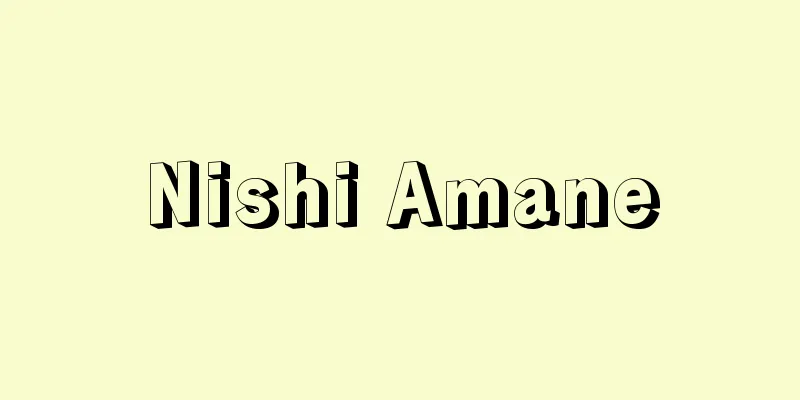Sentence - Bun

〘noun〙① Decoration to make one's appearance look beautiful. Pattern. Aya. *Shinsen Waka (930-934), preface: "A compilation of poems from ancient times that suppress the virtues of the ancients. The meaning is simple and the writing is of high quality." [Book of Rites - Music Records] ② Writing. Also, poetry and prose. By extension, a book that collects these. *Kojiki (712), preface: "In laying out the writing and composing poems." ③ Literature. Learning. The arts and sciences. Also, the act of striving to improve these. *Hogen (around 1220), vol. 1: "He was surpassed in rank by the four princes, who were neither literary nor martial artists." [Book of Documents - Yu Mo] ④ Something elegant. Something showy. Literary elegance. ※Eight Treatises on National Songs (1742), "Therefore, it is more literary than the poems in the Kojiki and Nihonshoki, and more qualitative than the poems in the Kokinshu." [Analects of Confucius - Yongya] ⑤ Aphorism. Idiom. Also, source. ※From the Hogen period (around 1220): "There is a passage that says that in emergency situations, the ruler should be the sole authority." ⑥ To have a tattoo. To decorate with tattoos. ※Zoka Myoyo Kidan (1879-80), Miyazaki Ryujo, two volumes: "Naka Yong cuts his hair and makes himself literate ." ⑦ Abbreviation of "Bunkan (civil official)." ※Ryo Gikai (718), official: "Five guards. Corps and various belts are soldiers. For military purposes . For the rest, they are literary ." ⑧ One of the grammatical units of language. An element of writing or conversation. A single word or phrase, or a series of words or phrases, which completes a thought from the speaker's perspective, such as a description, judgment, question, lament, or command. There are various definitions. In Western grammar, the condition for a sentence to be complete is that it must have a subject and a predicate, but this is not necessarily the case in Japanese grammar.Mon [Text]Source: The Selected Edition of the Japanese Language Dictionary About the Selected Edition of the Japanese Language Dictionary Information |
〘名〙① 外見を美しく見せるためのかざり。もよう。あや。※新撰和歌(930‐934)序「抑夫上代之篇。義尤幽而文猶質」 〔礼記‐楽記〕② 文章。また、詩文。転じて、それらを集めた書物。※古事記(712)序「文(ぶん)を敷き句を構ふるに」③ 文学。学問。学芸。また、これらを励み修めること。※保元(1220頃か)上「文にも非ず、武にもあらぬ四宮に、位を越られて」 〔書経‐大禹謨〕④ みやびやかなこと。はでなこと。文雅。※国歌八論(1742)歌源「故に古事記・日本紀の歌よりは文にして、古今集の歌よりは質なり」 〔論語‐雍也〕⑤ 格言。成語。また、典拠。※保元(1220頃か)中「非常の断は、人主専らにせよと云ふ文有り」⑥ いれずみをすること。いれずみで飾ること。※造化妙々奇談(1879‐80)〈宮崎柳条〉二編「仲雍髪を断(きっ)て身を文(ブン)にす」⑦ 「ぶんかん(文官)」の略。※令義解(718)公式「五衛府。軍団及諸帯レ仗者。為レ武。自余並為レ文」⑧ 文法上の言語単位の一つ。文章・談話の要素。単語または文節の一個または連続で、叙述・判断・疑問・詠歎・命令など話し手の立場からの思想の一つの完結をなすもの。定義には諸説ある。西洋文法では、主語・述語を具えることが文成立の条件とされることがあるが、日本文法では必ずしもそれによりがたい。文章。センテンス。〔広日本文典(1897)〕
もん【文】出典 精選版 日本国語大辞典精選版 日本国語大辞典について 情報 |
Recommend
Ishida Toryo
1865-1934 A Chinese scholar from the Meiji to ear...
Longhorn beetle - Longhorn beetle
…General term for insects belonging to the family...
Enmyoryu
A school of kendo. It is said to have been started...
Appalachian landforms
...a narrow, low-lying area between mountains or ...
Gilles de Rais
1404‐40 A great nobleman and field marshal of the ...
Kimberley Plateau
A general term for mountains and plateaus made of ...
Nagasaki Main Line - Nagasaki Main Line
The name of the Kyushu Railway Company's trac...
Algerian War
The Algerian National Liberation Front (FLN) foug...
Emperor Yamato Takeru
A prince of Emperor Keikō who plays an active role...
Frigate - Frigate (English spelling)
A general-purpose surface combat vessel that is g...
Lake Manasa (English spelling)
A sacred lake in Indian mythology, it is located a...
Participation Payment - Sankashiharai
Refusal to accept or pay on bills of exchange or p...
sprul sku (English spelling) sprulsku
...Abbreviation of the reincarnated Buddha. In Ti...
Okazaki Castle
A castle located in Okazaki City, Aichi Prefecture...
involute
…The limit circle when Q and R of this circle are...









